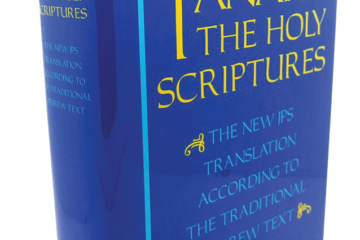Reclaiming Judith’s light

By Rabbi Judith Chessin, Temple Beth Or
I will never forget the insistence of my Classical Biblical Hebrew university professor that “the heroine of the book of Judith was not actually named Judith. This was merely an allusion to the fact that God used the agency of a mere woman to perform the miracle of saving the Jewish people.”

Horrified, I whispered to a classmate, “They better not say that about me some day!” Sadly, the ancient Judith did seem to lose both her name and renown in much of Judaism. Few people know her story or her association with the Festival of Lights.
Like the Books of Maccabees, Judith is an apocryphal work, meaning that it was not chosen by the rabbis to be a part of the Jewish Bible.
This exclusion was likely due to its late authorship and the fact that the text was preserved only in Greek.
Scholars believe that Judith was originally written in Hebrew around 137-78 BCE, near the time of the Maccabean revolt around 165 BCE.
The Book of Judith tells the story of a beautiful pious Jewish widow who single-handedly stopped the Assyrians from conquering Judea.
Though the story may be set in an earlier period than Maccabees, the theme of the powerless Jew defeating the mighty foe connected the story to the Hasmonean revolt and therefore to the holiday of Chanukah.
The plot begins when the Assyrian general Holofernes besieges the city of Bethulia. Judith, a young Jewish widow, devises a plan to save the city. She enters the Assyrian camp feigning surrender. Holofernes, overcome with attraction for Judith, takes her into his tent where she plies him with wine and cheese. When the general passes out from intoxication, Judith cuts off his head using his own sword, and smuggles the head back to her home town where it is mounted on the city walls.
When the enemy soldiers discover their decapitated general, they panic and flee, but are chased down and decimated by the citizens of Bethulia. The city is saved. Judith and her neighbors make a pilgrimage to the Temple in Jerusalem to celebrate and sing songs of praise to the Lord. Judith lives to the ripe old age of 105 and never remarries.
Many theories account for Judith’s obscurity in our tradition. First, the book is only thematically linked to the Chanukah story. Because it is not historically linked to the Maccabees’ victory, it is not a story that is ritually rehearsed in synagogue or in the home.
Second, the book is not as literarily clear, concise or poetic as better-known biblical works such as Esther or Ruth.
Feminist scholars contend that the patriarchal redactors of the Bible were more comfortable with an Esther whose heroics were performed through the agency of a man (Mordechai), or a Ruth, whose fame came through more traditionally feminine roles of filial piety, marriage and childbirth.
Judith is a bold actor in history who derives her own plan, takes decisive action and wields a man’s sword. She remained unmarried, controlled her own wealth, and produced no heirs.
Since Judith’s story threatened the “status quo” of Jewish social norms, her story has been all but erased from history.
Even culinary customs conspired against Judith. Medieval tradition suggested eating of dairy foods to recall the salty cheese Judith used to get the Assyrian general thirsty and thus intoxicated.
In his commentary on the Shulchan Aruch, the 16th century’s Rabbi Moshe Isserles recommended that Eastern European Jews eat cheese products to honor Judith.
Sephardic Jews fried goat or sheep cheese in olive oil to commemorate both Judith’s and Judah Maccabee’s heroic deeds.
However, Ashkenazi (Eastern European) Jews used chicken fat (shmaltz) for frying, and thus potatoes were substituted in concession to Jewish dietary laws.
Potato latkes were born but Chanukah’s dairy dietary reminder of Judith simultaneously vanished.
The Book of Judith may not be a direct Chanukah story, but it certainly hints at being, like Chanukah, an early Israelite winter solstice legend.
The story carries traces of customs related to the solstice which falls at the end of the olive harvest season in Israel.
In the Book of Judith, those who come out to greet the returning warrior carry lamps and torches.
During Judith’s victory pilgrimage to Jerusalem, the Bithulians wear olive wreaths, not only as a Hellenistic sign of victory but also in celebration of the end of the winter olive harvest.
North African Jewish legend claims that Judith’s victory took place on the new moon of Tevet, the new moon closest to the winter solstice.
Rabbi Jill Hammer suggests that the Book of Judith gives us a glimpse of one of the earliest winter solstice celebrations long before the Maccabean story of the jar of oil by which the Temple was rededicated.
In this respect we may understand why Sephardic Jewish women would meet specifically on the seventh night of Chanukah (Rosh Chodesh Tevet) to eat dairy food and celebrate the heroine Judith.
All in all, it seems high time to take Judith’s light out from under the bushel and to reclaim this Jewish heroine. I recommend fried cheese and olives (with or without martinis) to celebrate a Jewish heroine finding her name once again.
To view the print version of the December 2013 Observer, click here.





